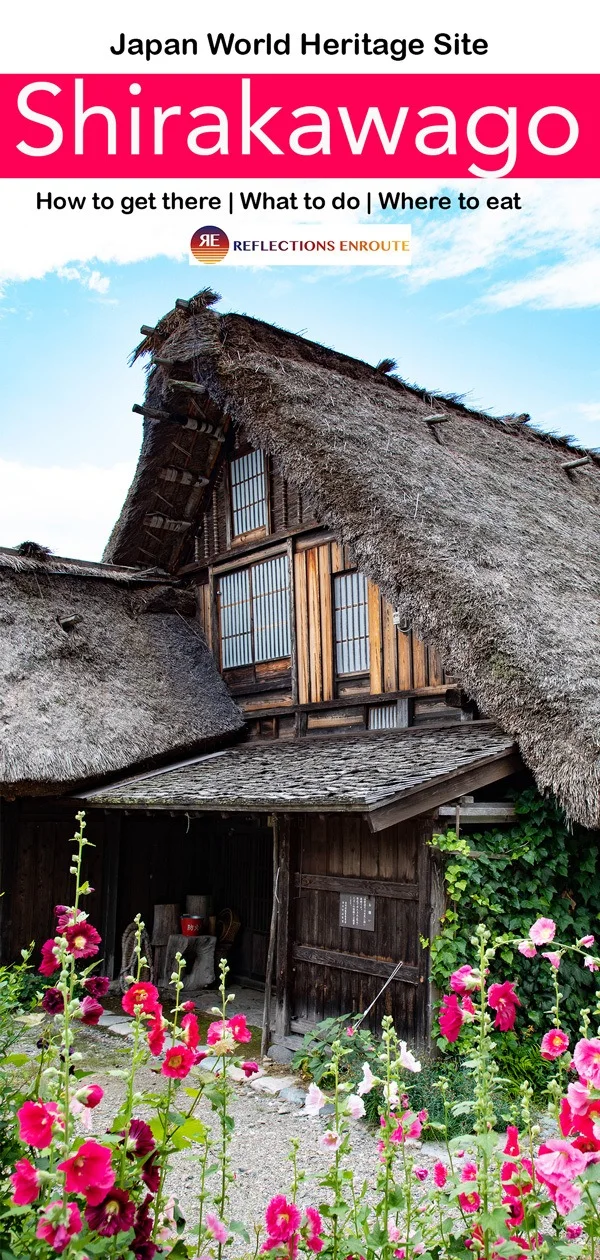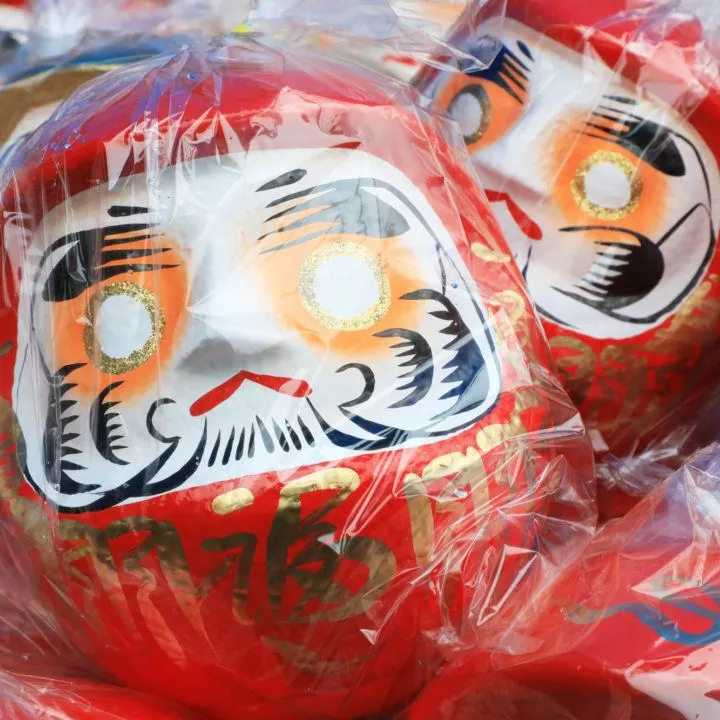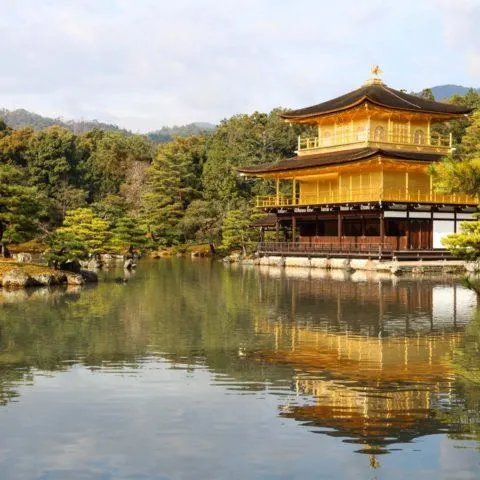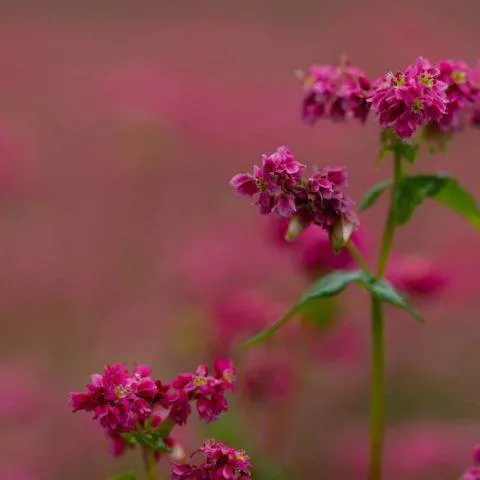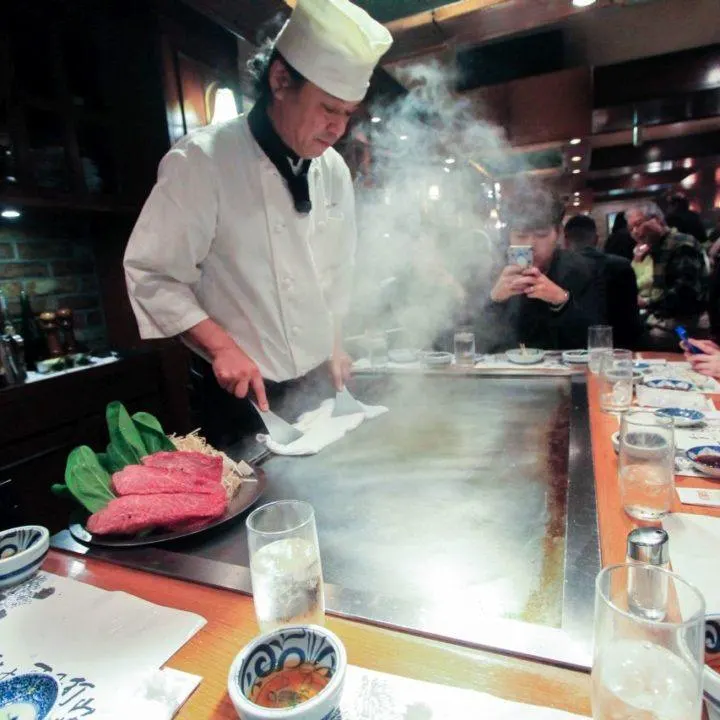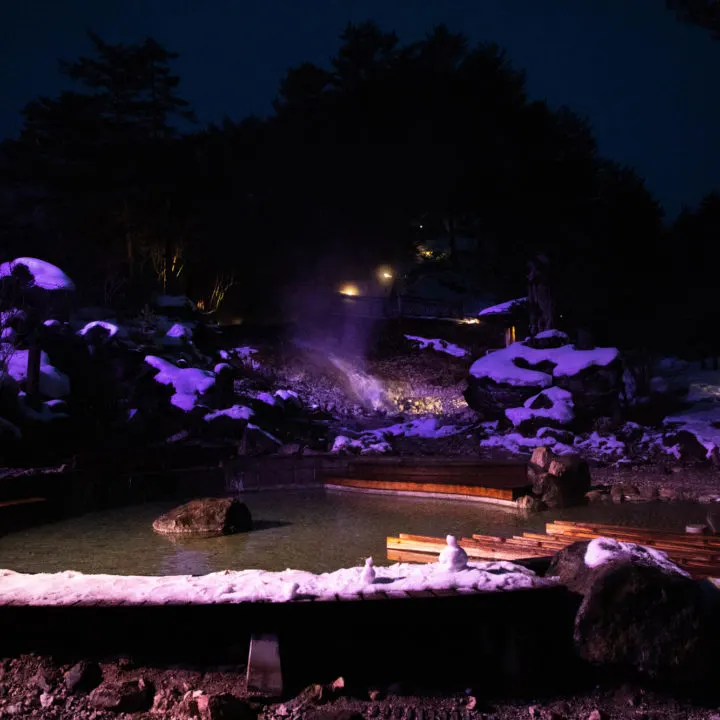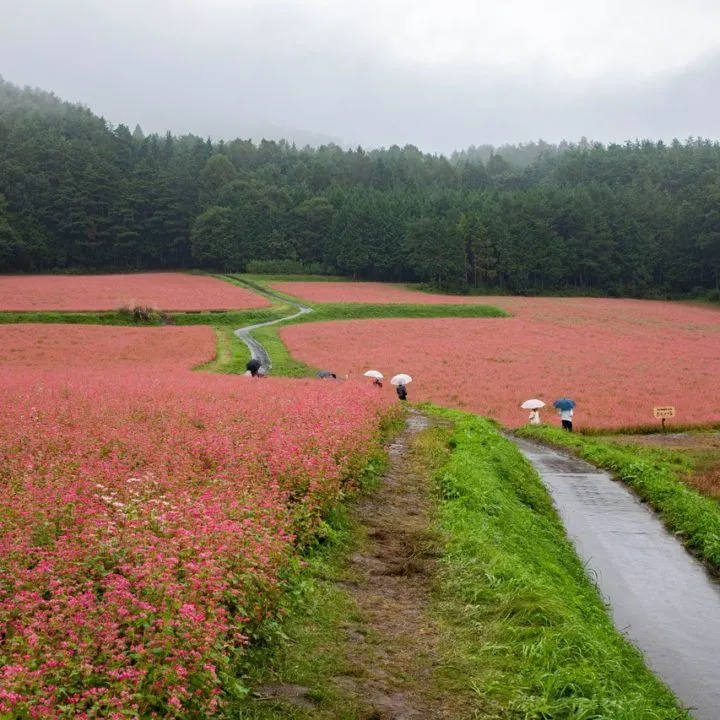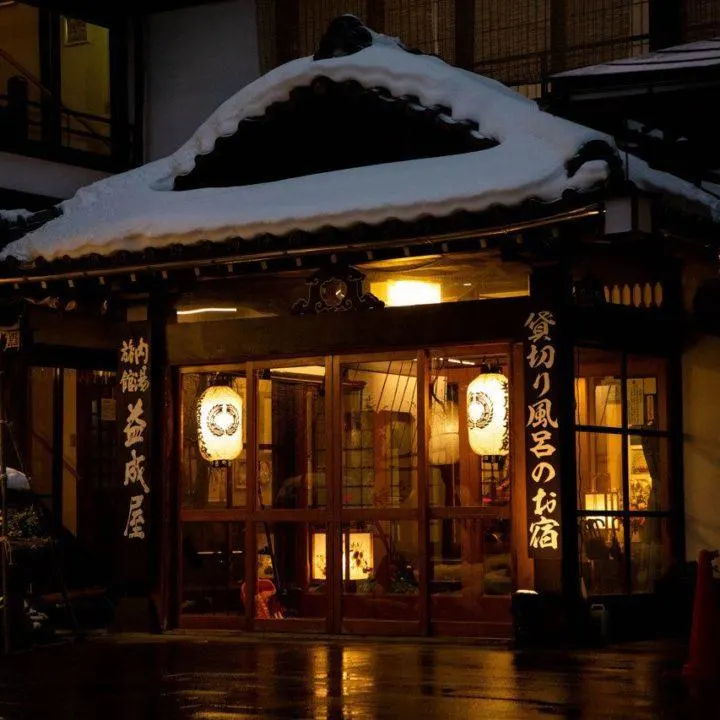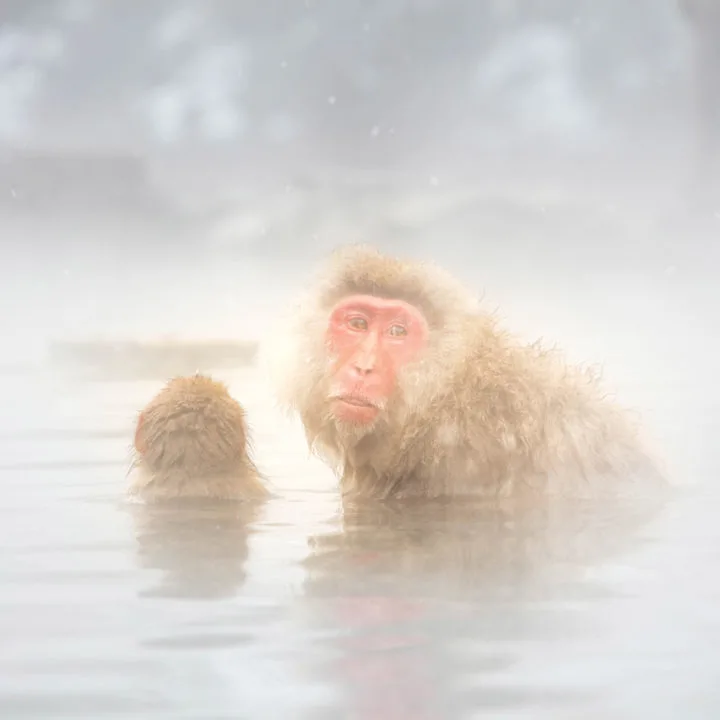Are you looking for a special, real Japanese-type of experience? Shirakawa-go Japan, is the perfect place to find a traditional Japanese roof village. When is the best time to go? Summer and winter bring lots of beauty to the gassho zukuri!
Amidst a light, but watery snowfall, Shirakawago greeted us with the old world charm for which it’s famous. We’d only come from Matsumoto where we had a blast at the Ice Sculpture Festival, but were more than ready to get out of the car and walk.
The best thing about Japan winters is that the temperature isn’t that bad, as long as you are prepared for them. We were immediately taken with the snow-laden roofs of the “gassho zukuri” houses in the town of Ogimachi. The view was magical, dreamlike, something we’d seen stunning photos of, but weren’t sure that the real thing would live up to the hype. Spoiler alert: It did!
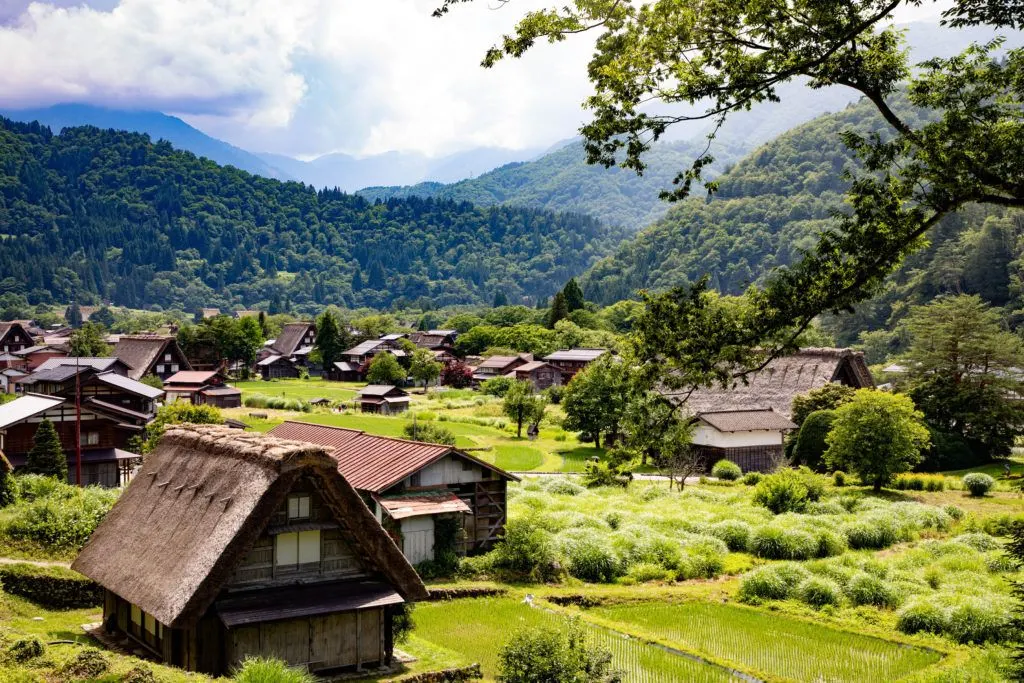
When is the Best Time to Go to Shirakawago?
After having been to Shirakawago in summer and also in winter, we can tell you that both seasons are fantastic and they have the harshest weather. So that means both spring and fall are just as great in Shirakawago, if not better. In all truth the best time to go to Shirakawago is whenever you can!
Shirakawago is located in the Gifu prefecture in a valley surrounded by mountains. It’s a pretty wet place with no less than eight days of rain or snow per month. It’s the perfect farming weather and summer views are amazing with a deep green covering the hills and rice paddies and a plethora of flowers. Winters are heavy with snow, making for a stunning backdrop to this traditional Japan thatched roof village.
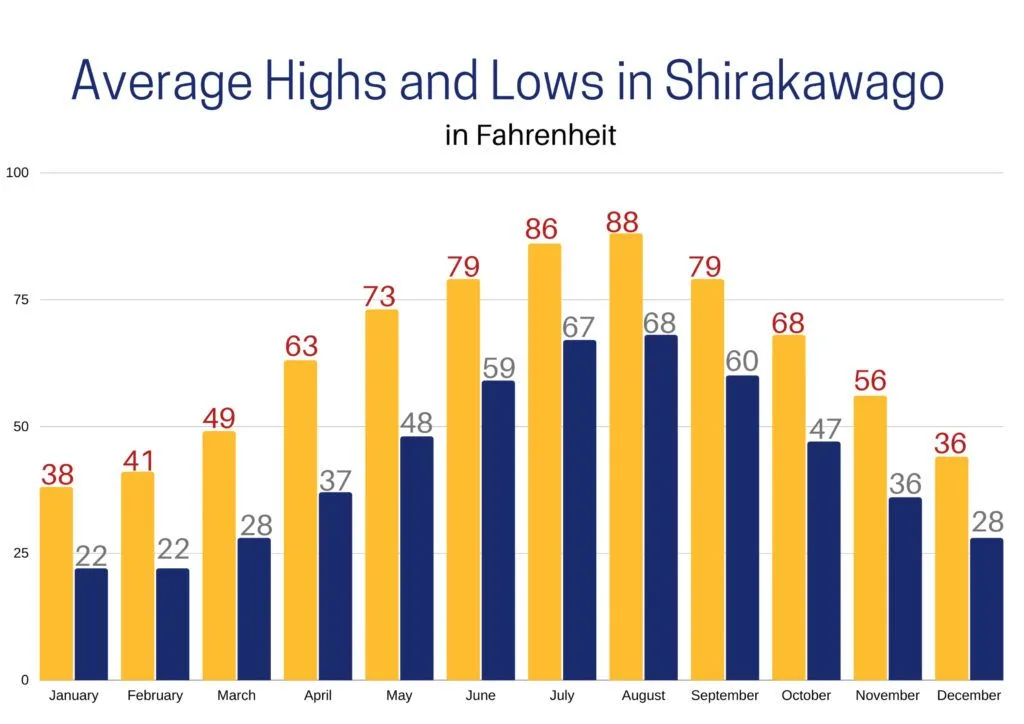
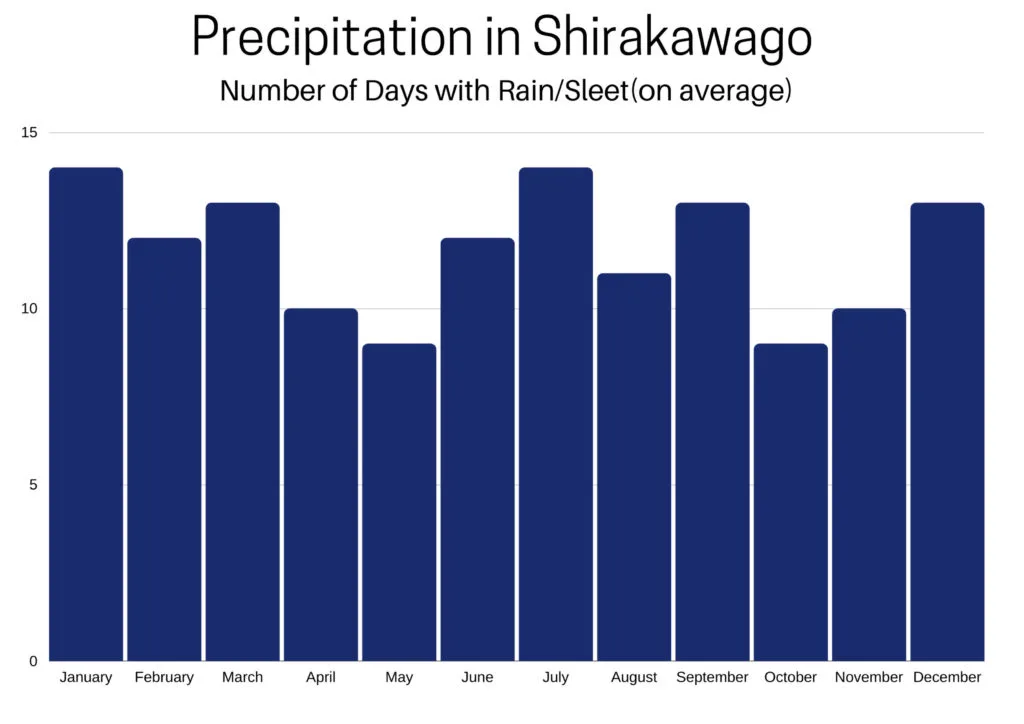
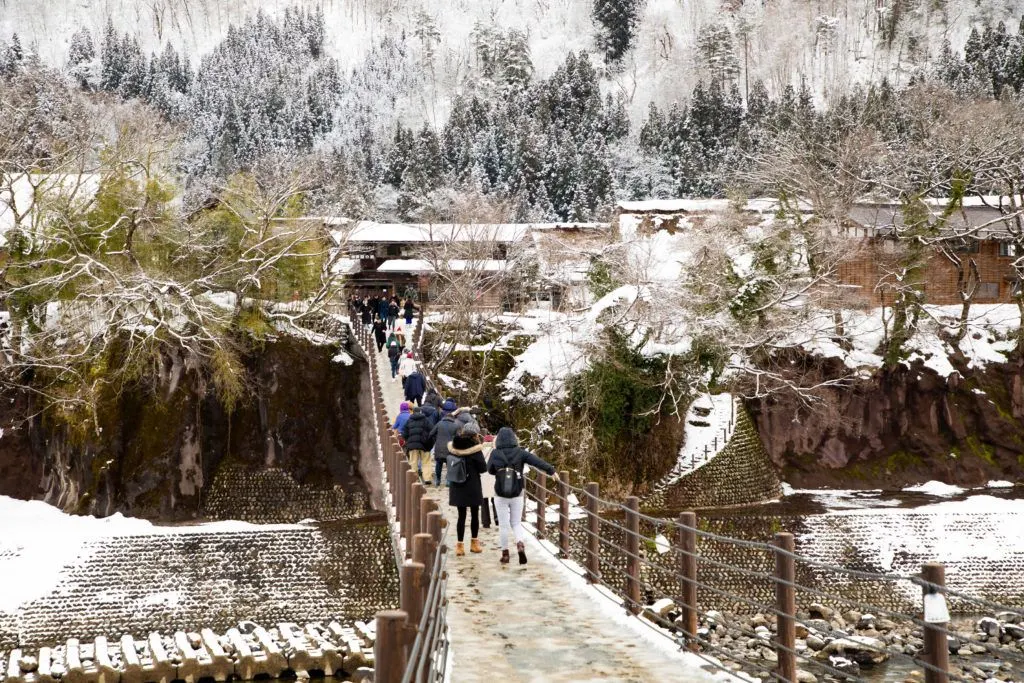
Winter
Our first visit to the Japan heritage village was in winter. Snow fell on us during part of our day, fresh and clean. The village with their ancient wooden houses and steeped thatched roofs could not have been more fairytale-like. The temperature was warm enough for us to stay outside for good lengths of time in-between a run into a coffee shop or to our lunch restaurant. We definitely fell in love.
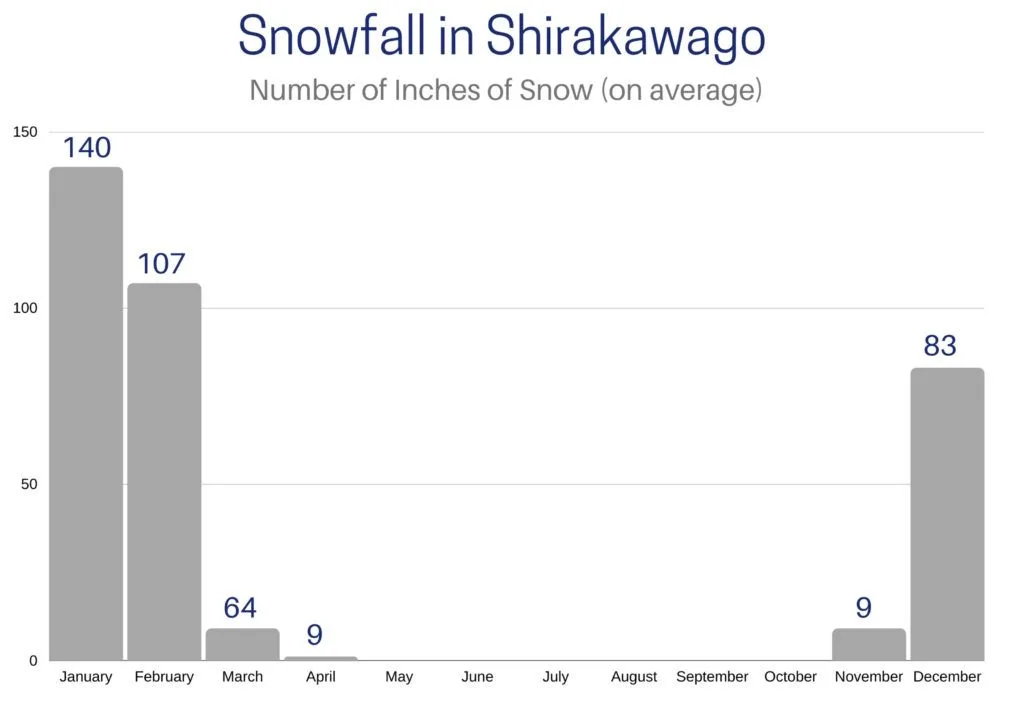
Pro Tip: As you can see the winter months in Shirakawago have very heavy snowfall. It’s gorgeous, but please make sure the day that you are going that the roads are open.
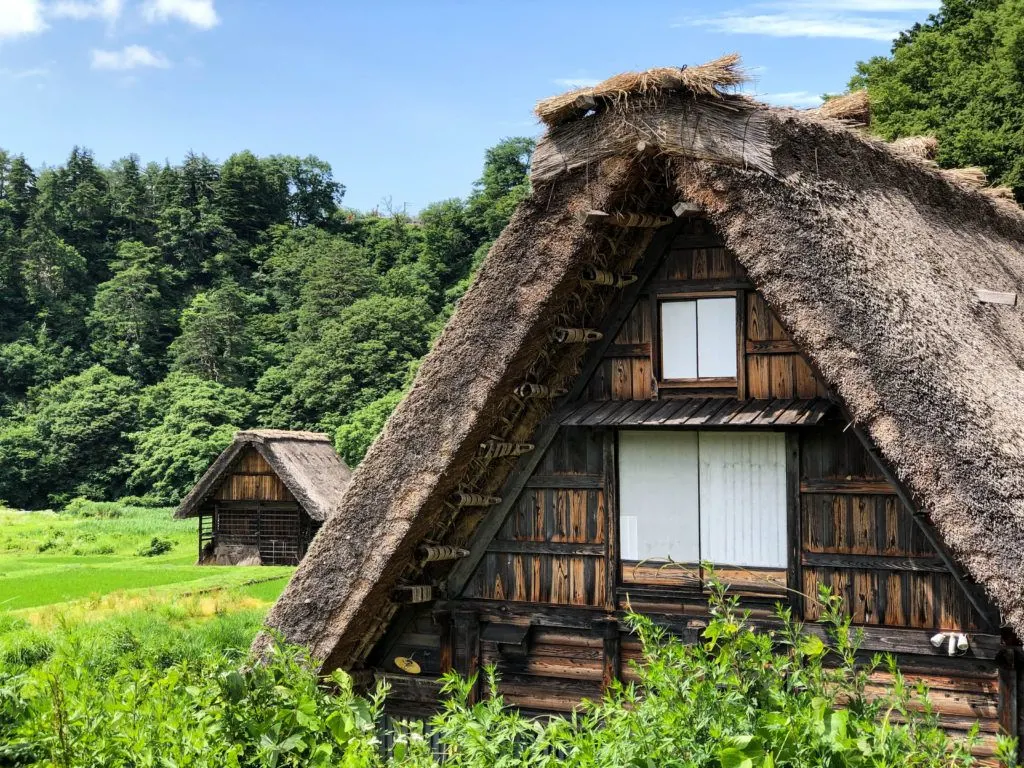
Summer
We loved the world heritage site of Shirakawago so much that we wanted to see it during the summer as well, so we had to return. Ogimachi was just as beautiful in summer. So when you ask me which season is better, I really won’t have a definitive answer. Unlike other places that you might travel in Japan, all of Shirakawago’s seasons are fantastic to walk around and find out about this step back into an era gone by.
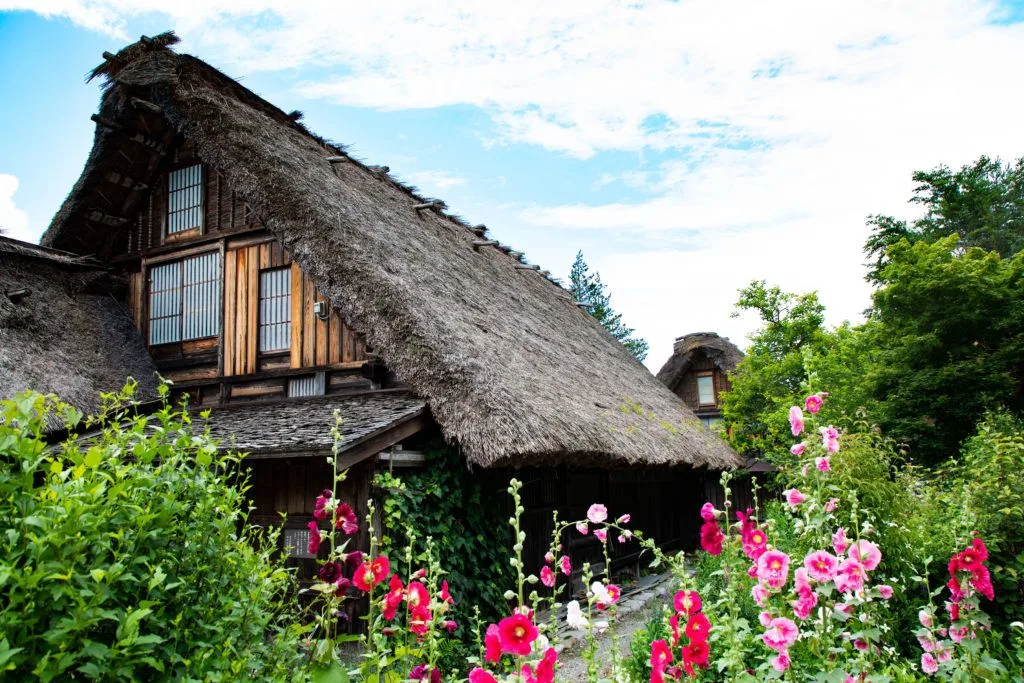
Shirakawago – World Heritage Site
In the past, Japan was a country that kept to itself. It wasn’t interested in other countries, and wanted its culture to remain intact. Therefore, it’s very easy when traveling around Asia to see that Japan is unique, and because of this isolationist policy there are still plenty of places in Japan that feel like a trip to the past.
One of the best examples of this is the historic village of Ogimachi, deep in the Shiro Valley of the Japanese alps, are many houses built over 300 years ago, with intricate and traditional steeped thatched roofs. Because of these outstanding examples, UNESCO included Shirakawago on the world heritage list in 1995, which includes not only Ogimachi, but its neighboring villages of Ainokura and Suganuma as well.
This valley and Ogimachi is not the easiest place to get to, unless you have a car or you take a day tour, but it’s well worth the effort, and the good thing is, unless you are paying for parking, there is no cost to wander through the village, so it’s quite affordable.
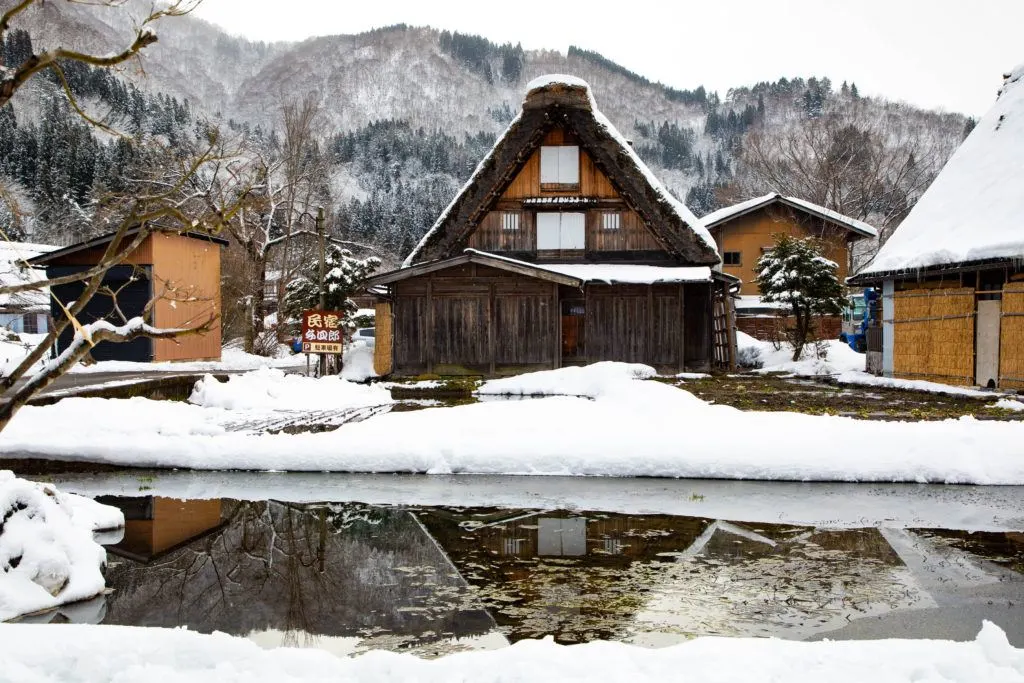
What Are the Gassho Zukuri or Thatched Roof Houses?
If you think that it’s a little out of the way now, you can imagine how rural and hard to get to it was a few hundred years ago. Situated in the Shiro river valley, it was basically cut off from surrounding areas especially in winter.
The winters are harsh, with up to ten meters (around 450 inches) of snow each year, the architecture had to be sturdy to deflect the heavy snow. Gassho zukuri was the result. The steeped roofs of these farmhouses are said to be constructed (“zukuri”) in the shape of a Buddhist’s praying hands, called “gassho,” and it’s one of the features that draws people to this village.
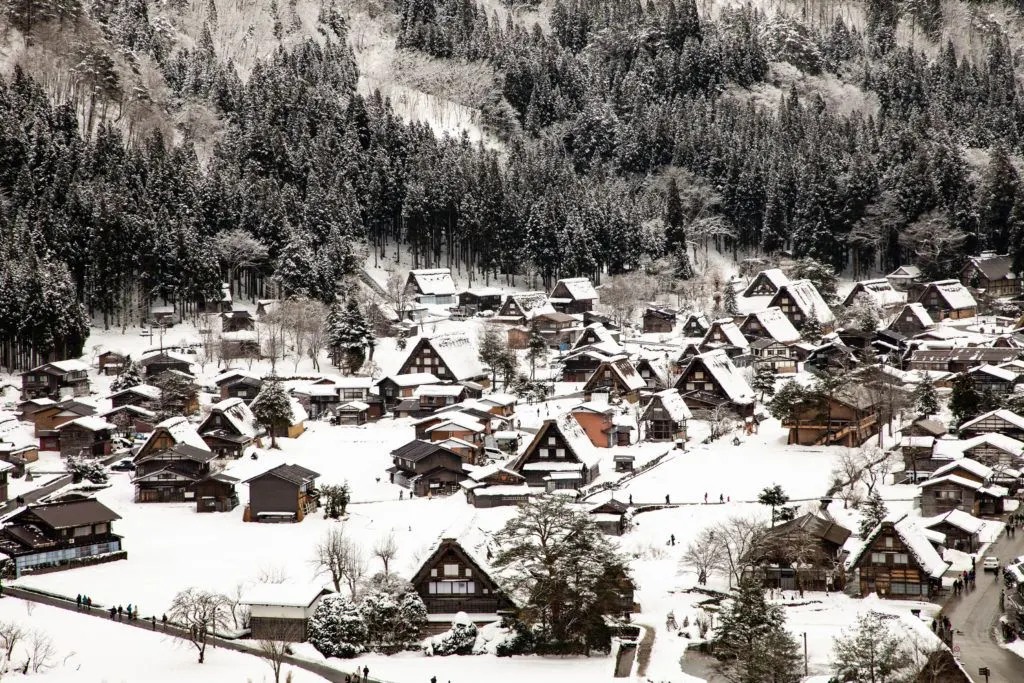
The roofs are built on wooden beams that are held together with wooden pegs, not nails, as well as lashed together with ropes. You can visit some of the old houses and see the inside of the roofs if you are willing to pay a small fee. While we were visiting in the summertime, we watched as a crew was re-thatching a roof in town, quite fascinating.
Due to its isolation and unique environment, the Shiro valley was also one of the only places in Japan to host the silkworm industry. The space in the attic, during the summer was airy and light, making it the perfect place to raise silkworms.
Shirakawago Map
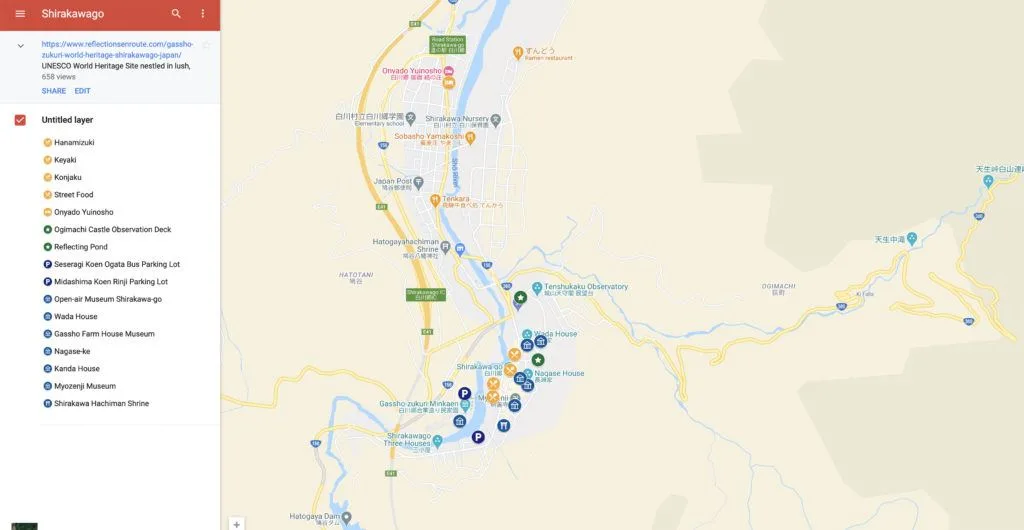
What to Do in Shirakawago
In Ogimachi there are surprisingly quite a few places to stop and visit. You can easily fill up a day, but if you’d like to do a little hiking, or just experience the village at night when all the tourists have gone home, you can book one of the gassho houses for a night’s accommodation as well.
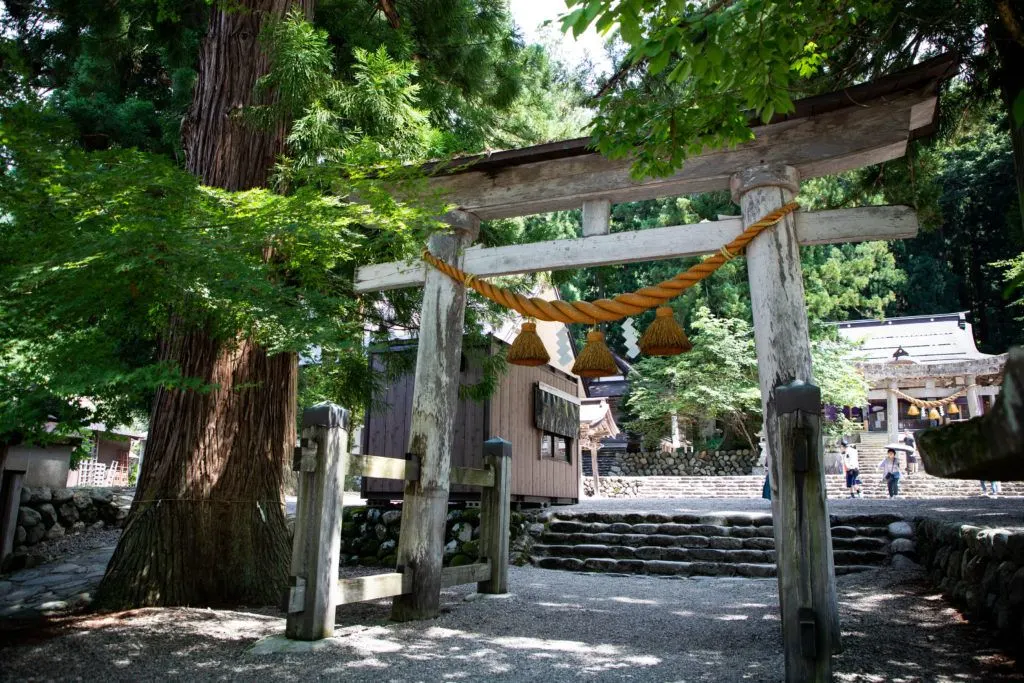
Places to Visit in Shirakawa go
- Shirakawago Tourist Information Office – Located in the main bus parking lot, it’s a good place to start when you arrive to give you a good layout of the land and what’s on offer.
- Gassho Zukuri Minkaen – A small open air museum with placards explaining the building and history of the area.
- Gassho Houses – Some of the farmhouses are open to the public and charge a small fee to enter: Wada House, Kanda House, Iwase House, and Nagase House. Cost is about 300 yen per person at each house.
- Ogimachi Castle Observation Deck – This is a must-see for everyone. There are a few ways to get there: walk up the path which takes about 15 minutes, take the shuttle bus, or drive and park. Cost is free.
- Myozenji – Buddhist temple with gassho roof.
- Hatogayahachiman Shrine – A peaceful shrine most of the year, but really comes alive in February during the Doburoku Festival.
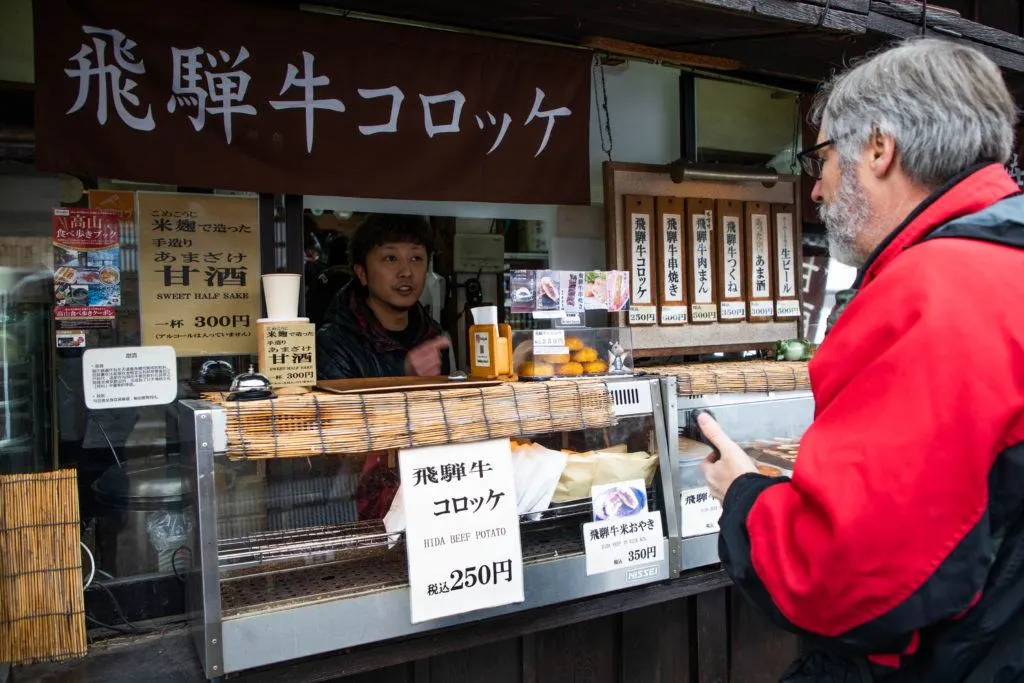
Where to Eat in Ogimachi
After having visited both in winter and summer, I can tell you that there are certainly more places to eat in summer, but don’t fret. There’s still plenty of restaurants and stalls to get some fantastic Japanese food all year long.
Of course, we wanted to eat in a traditional house, and since almost all of the structures at Shirakawa-go are protected that wasn’t really a problem. The big problem is being in the small village at the right time. The few restaurants that are there are likely to run out of their lunch offerings fairly early.
Our first choice is always Konjaku, one of the first building just across the foot bridge from the main parking area. If we’ve missed out on that, then udon at Hanamizuki in a quiet corner of the hamlet is our next choice.
If that’s not available then soba and tempura always pleases at Keyaki, a (slightly) newer wooden building in the middle of town.
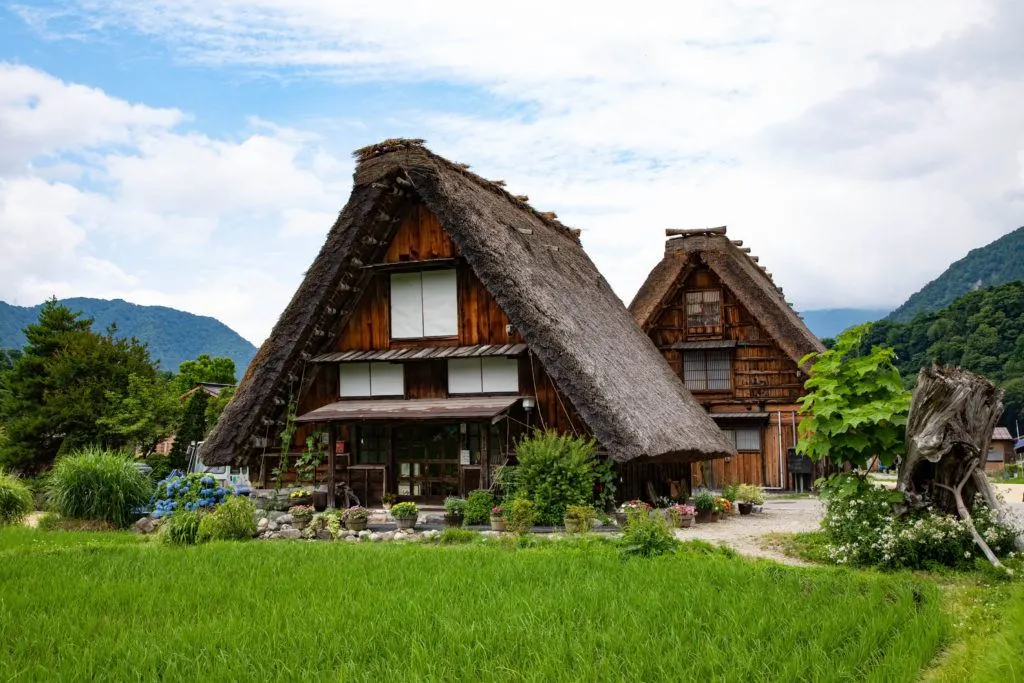
Shirakawa-go Accommodations
If you are interested in staying in a gassho farmhouse right in the village you’ll need to contact the village tourist association directly. According to their website these farmhouses are rather austere as far as accommodations go, but are often one of the most memorable experiences for visitors.
There are a few ryokan and hotels in the area, with the standout option being the beautiful hot spring inn, Onyado Yuinoshou just on the edge of town. Another excellent option is to stay in Takayama at another one of our favorite onsen hotels, the Wat Hotel and Spa Hida Takayama, and then visit Shirakawago on a day trip.
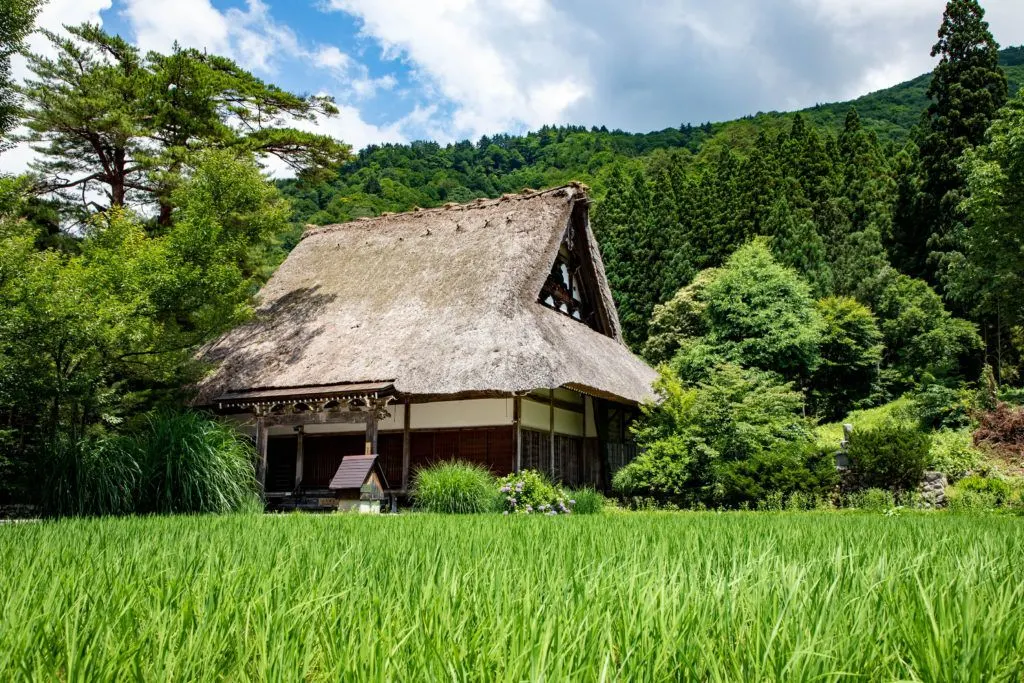
How to Get To Shirakawago
Shirakawago has traditionally been cut off from the rest of the world, but today it is much more accessible. There are plenty of bus tours, both summer and winter, regular buses, and of course if you have your own car, you can drive.
I always prefer driving, because along the way, it gives me the opportunity to stop when I want to stop. However driving in Japan can easily be as expensive as a shinkansen so definitely take a look at your options.
Take a Private Shirakawago Tour
A UNESCO world heritage site, such as Shirakawago, makes it a sure thing for tour companies and you can pick up a day tour from Kanazawa. In winter, there are several weeks where the town is decked out in lights. It’s very difficult to get on one of these tours, but if you can secure it, you’ll love it.
Takayama to Shirakawago
Takayama is easy to get to by train from anywhere. It is on the Take the Japan Rail Tokaido Bullet train from Tokyo, with one change. First you take the shinkansen (bullet train) to Nagoya, then switch to the JR Hida line to go to Takayama. Total ride is almost four hours. That’s okay, though, because there is plenty to see and do in Takayama as well.
By bus – Take the Noki bus from the Takayama bus terminal if you want to reserve online before you go. Otherwise you can get to the terminal and inquire when the non-reservation bus is next departing. Both will get you to Ogimachi in 55 minutes.
By car – Driving only takes about one hour from Takayama to Shirakawago, take the Chubu Expressway, then follow the signs to Hida. Take exit 14 to Shirakawago and it’s a straight shot into the town of Ogimachi. This is a toll route.
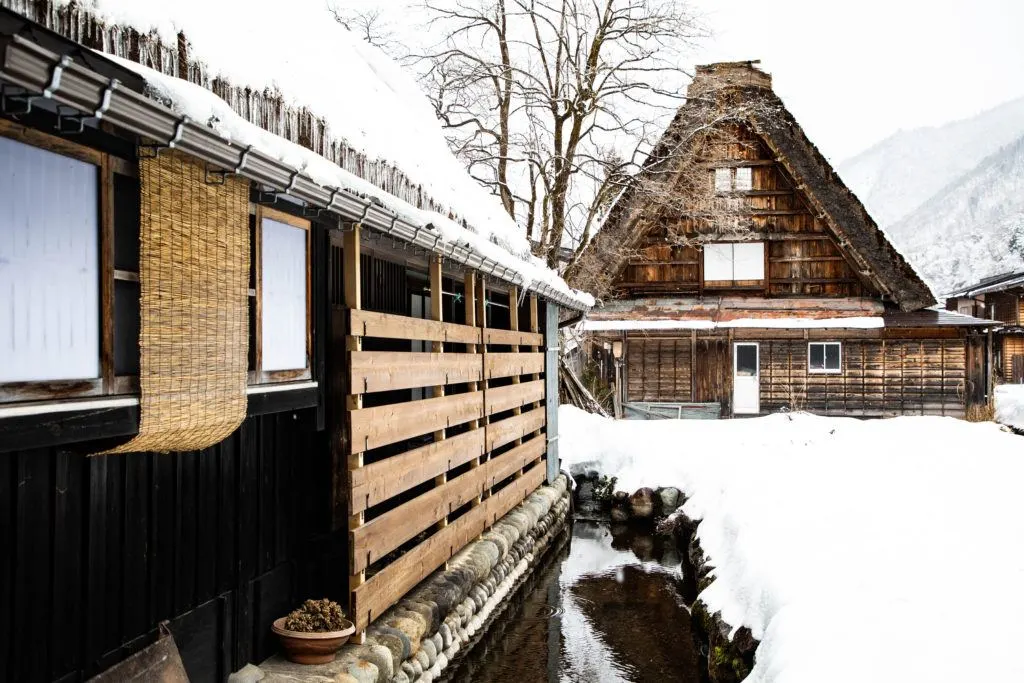
Kanazawa to Shirakawago
Kanazawa is another fantastic destination, and to get there from Tokyo take either the Hokuriku or the Kagayaki bullet trains (both take about two hours). From there you will need to take a bus from Kanazawa station to Ogimachi.
By bus – The Kanazawa bus terminal once again has a number of buses to choose from if you don’t want to make reservations before you go. One of the best options t0 Ogimachi is to take the Hokutestsu bus. This ride takes about one hour and 15 minutes.
By car – Take national road 159 to Nanto where you will get on the Hokuriku Expressway. From there take exit 14 to head into Shirakawago. This route will take 1.25 hours and has tolls.
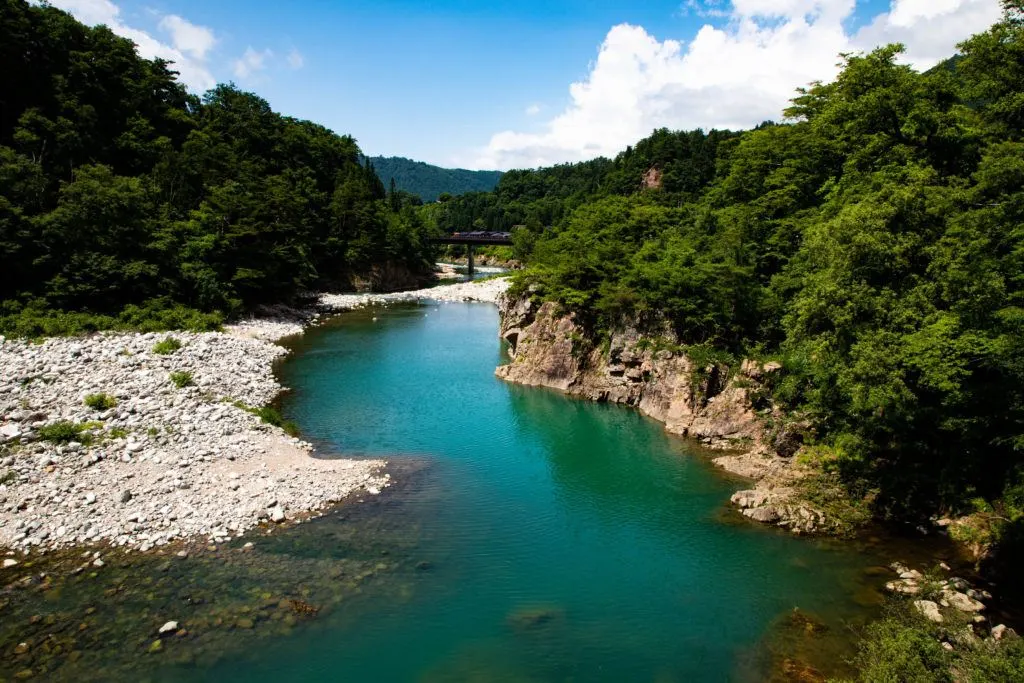
Conclusion
If you are looking at a trip to Japan, make it the best it can be. Japanese traditional culture is still intact in very few places, and one of those is Shirakawa-go. I would highly recommend you try to make it here. You will love it.
More Photos of Shirakawago Winter and Summer
Shirakawago Summer Images
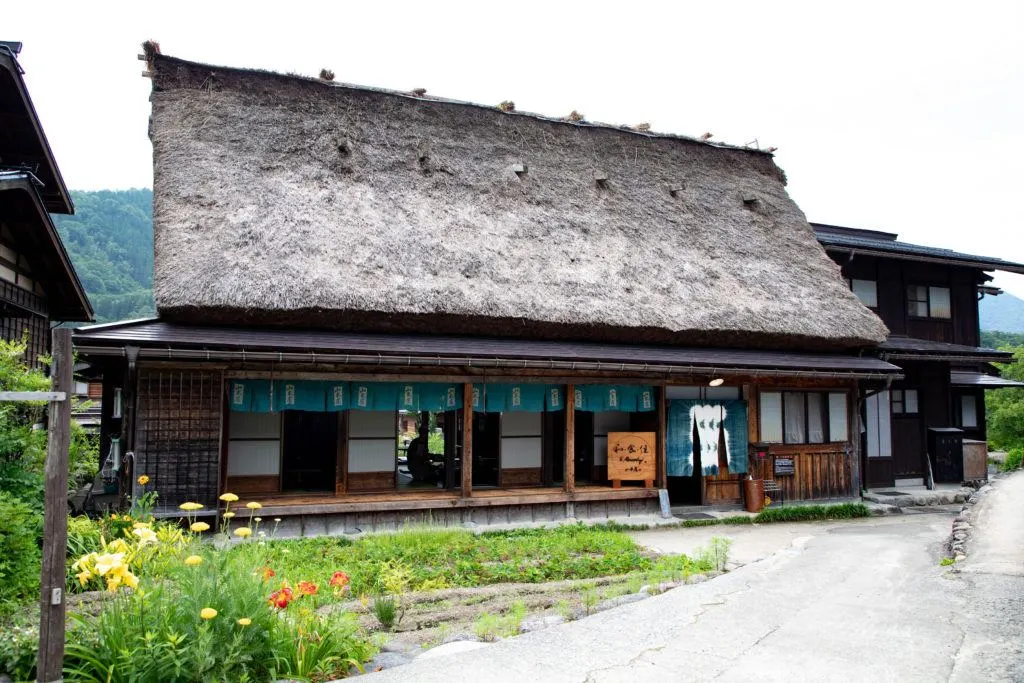
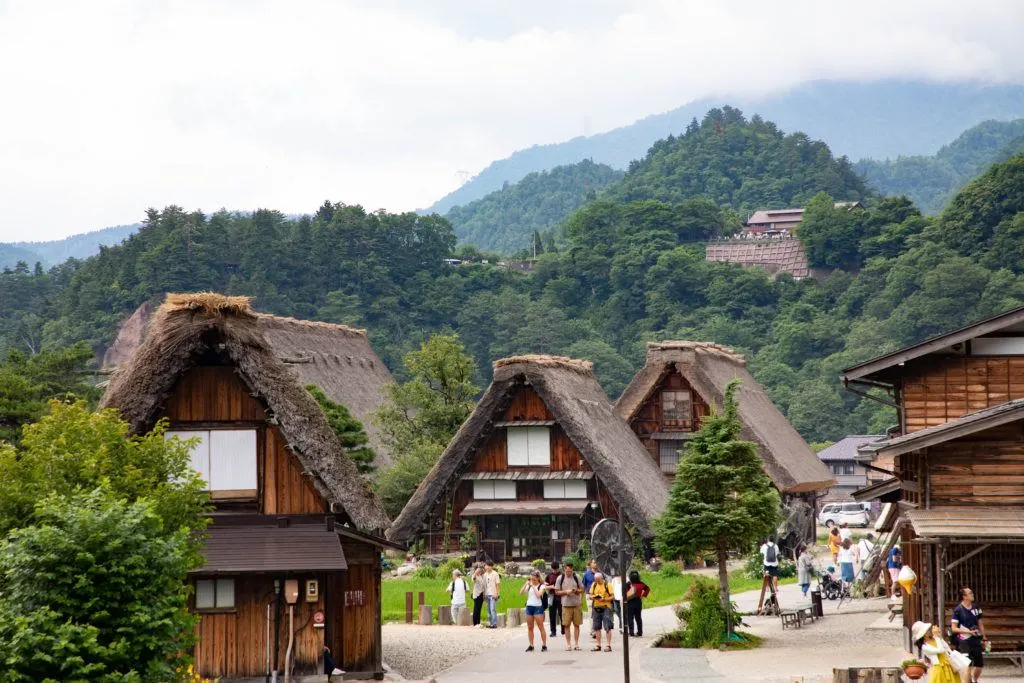
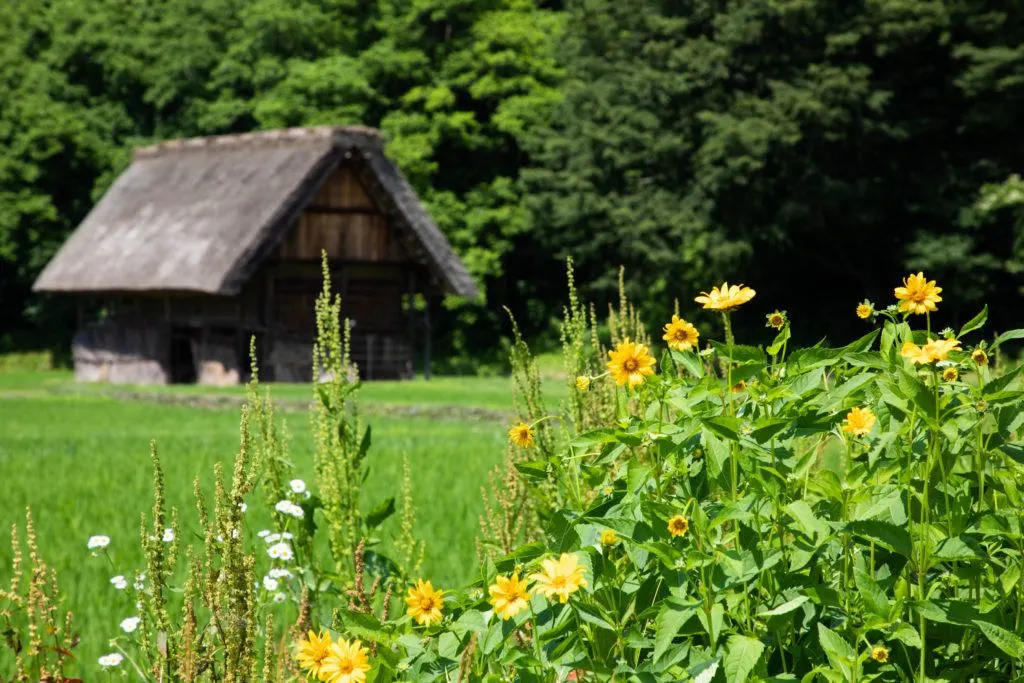
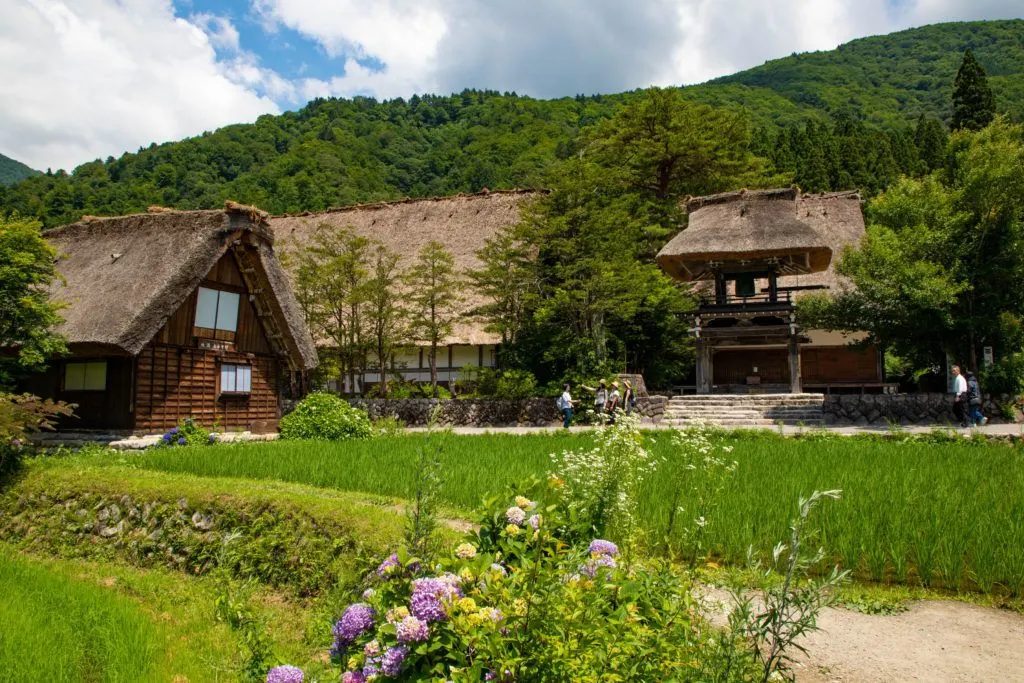
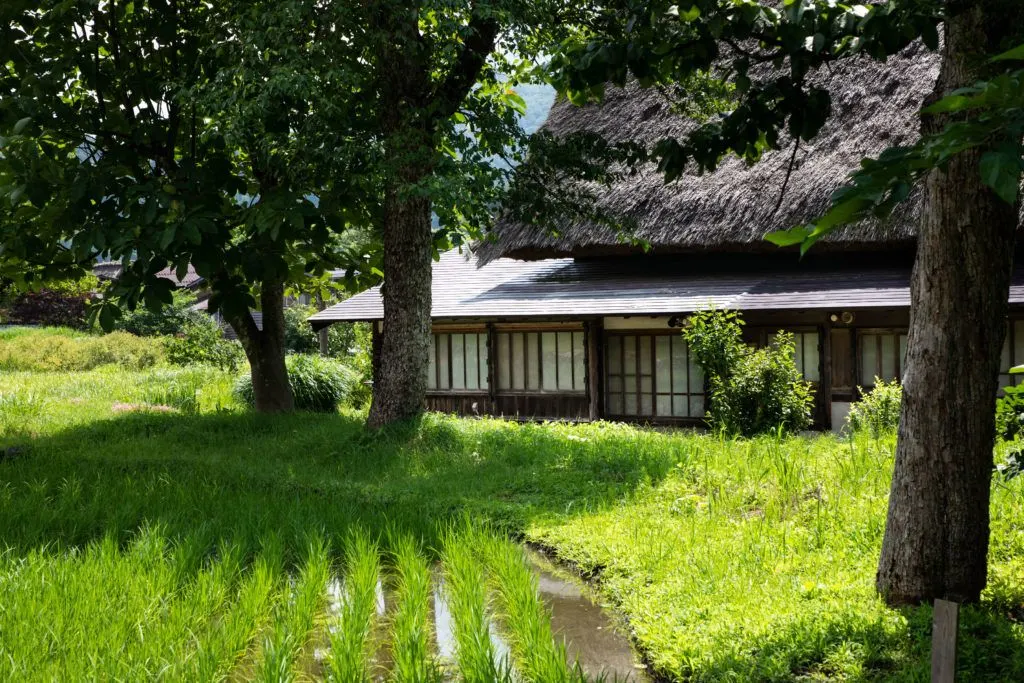
Shirakawago Winter Images
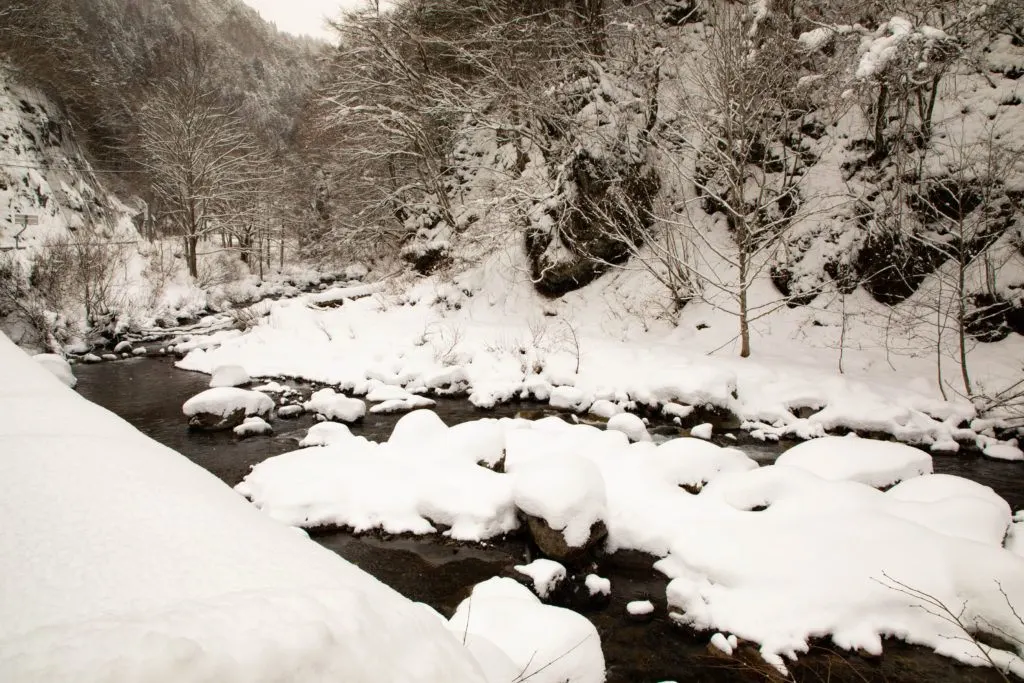
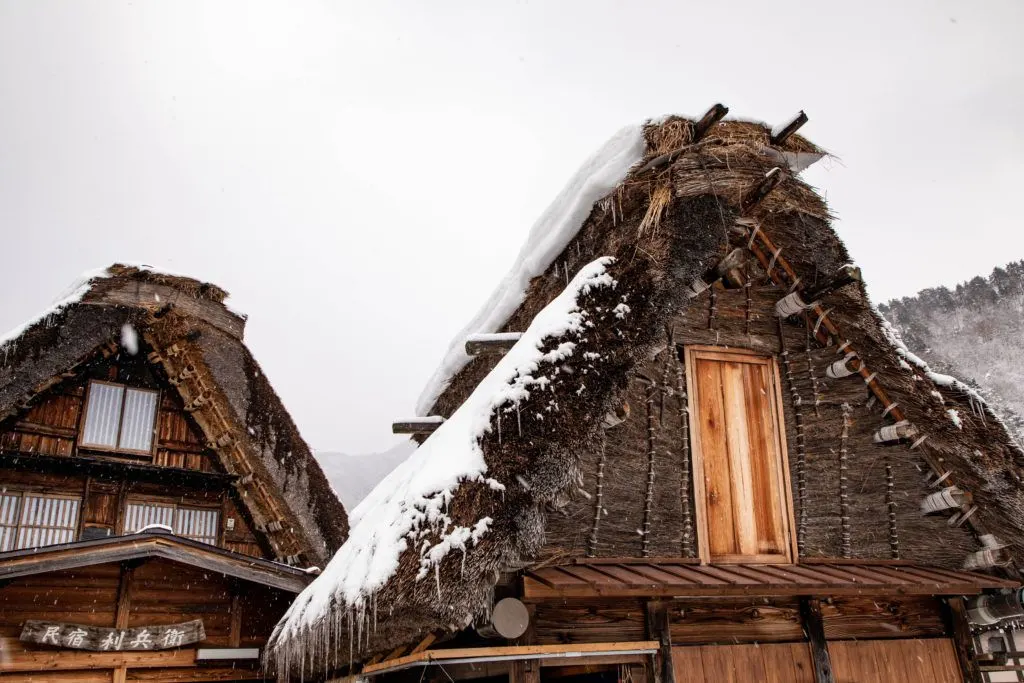
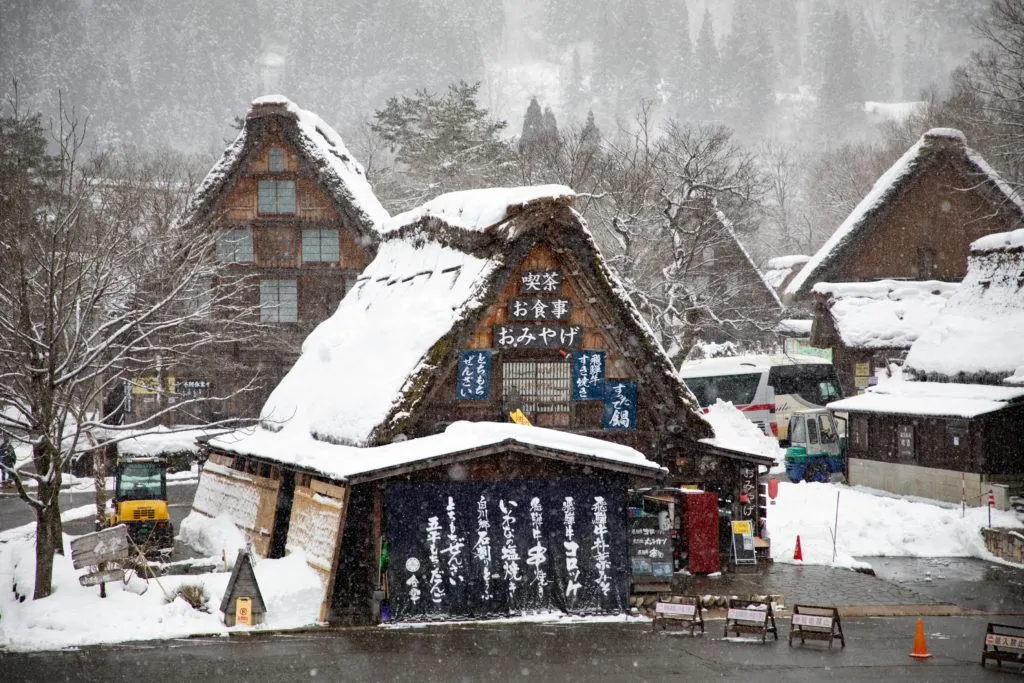
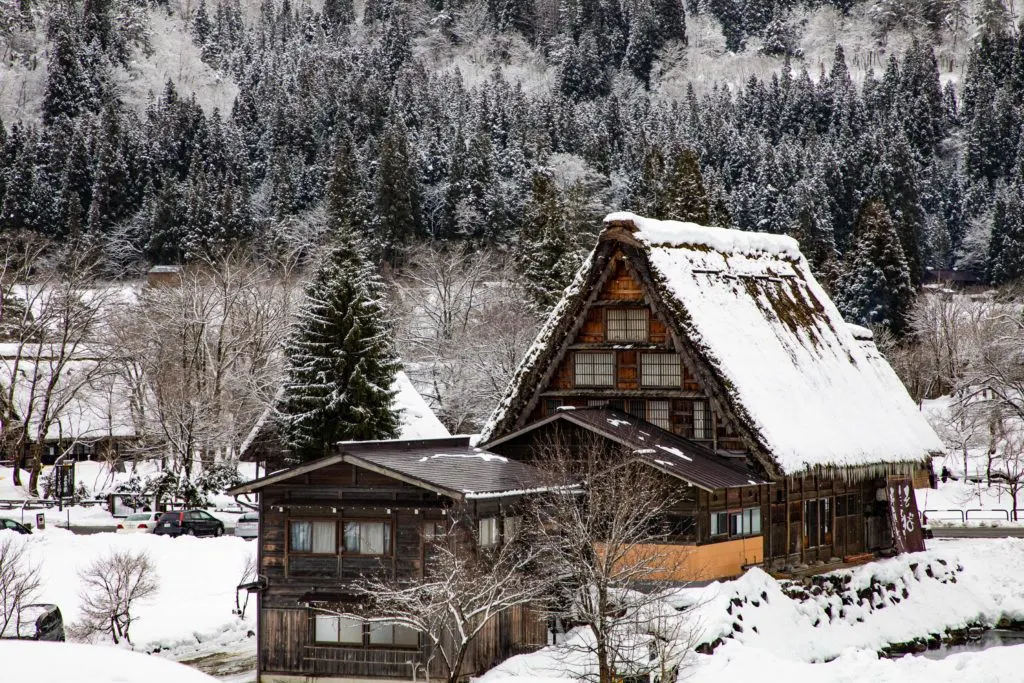
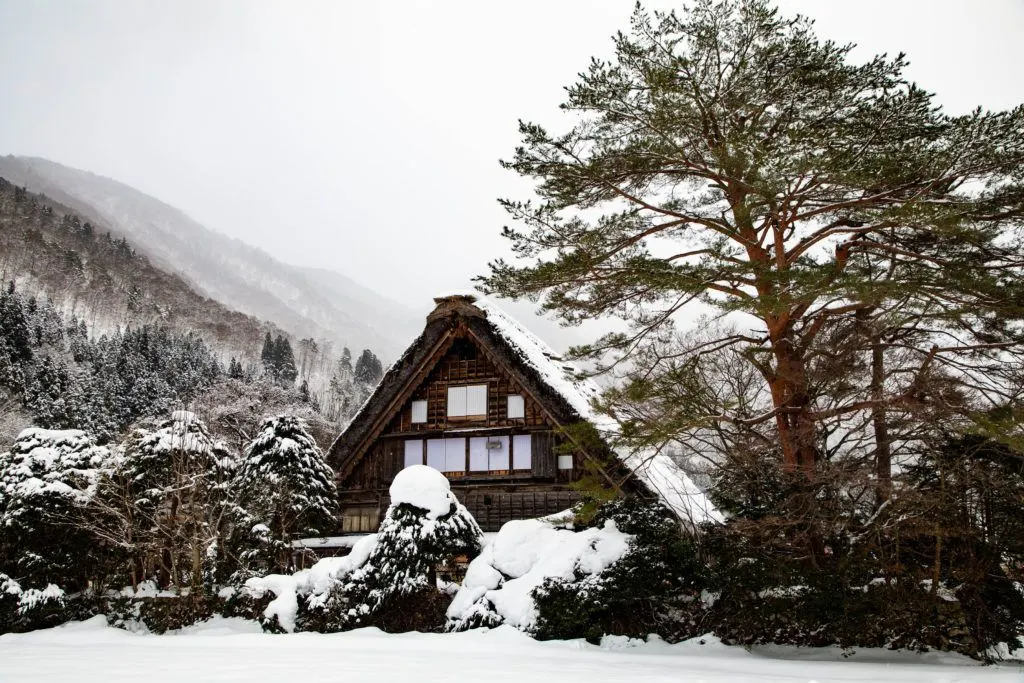
Author Bio: Corinne Vail is a travel photographer, food lover, and a perpetual traveler who has been travel writing for over 14 years. For many years she lived overseas in Germany, Japan, Turkey, South Korea, and the Netherlands teaching the children of the US. military. She’s visited over 90 countries, and she’s not stopping anytime soon.
If You Loved Shirakawago, Check Out These Posts
